Bain Capital
From Wikipedia, the free encyclopedia
 | |
| Type | Private, LLC |
|---|---|
| Industry | Private equity |
| Founded | 1984 |
| Founder(s) | Bill Bain [1], Mitt Romney, T. Coleman Andrews III, Eric Kriss |
| Headquarters | Boston, Massachusetts, U.S. with offices in Chicago, New York, London, Palo Alto, Luxembourg, Tokyo, Hong Kong, Shanghai and Mumbai |
| Key people | Joshua Bekenstein, John Connaughton, Paul Edgerley, Mark Nunnelly, Stephen Pagliuca |
| Products | Venture capital, investment management, public equity, high-yield assets, Mezzanine capital,leveraged buyouts and growth capital |
| Total assets | |
| Employees | 400+ (2012)[2] |
| Website | www.baincapital.com |
Bain Capital is a Boston-headquartered alternative asset management and financial services company that specializes in private equity, venture capital, credit and public market investments. Bain invests across a broad range of industry sectors and geographic regions. As of the beginning of 2012, the firm managed approximately $66 billion of investor capital across its various investment platforms.
The firm was founded in 1984 by partners from the consulting firm Bain & Company. Since inception it has invested in or acquired hundreds of companies including AMC Entertainment, Aspen Education Group, Brookstone, Burger King, Burlington Coat Factory, Clear Channel Communications, Domino's Pizza, DoubleClick, Dunkin' Donuts, D&M Holdings, Guitar Center, Hospital Corporation of America (HCA), Sealy, The Sports Authority, Staples, Toys "R" Us, Warner Music Group and The Weather Channel.
As of the end of 2011, Bain Capital had approximately 400 professionals, most with previous experience in consulting, operations or finance.[2] Bain is headquartered at the John Hancock Tower in Boston, Massachusetts with additional offices in New York City, Chicago, Palo Alto, London, Luxembourg, Munich, Mumbai, Hong Kong,Shanghai and Tokyo.
The company, and its actions during its first 15 years, became the subject of political and media scrutiny as a result of co-founder Mitt Romney's later political career, especially his 2012 presidential campaign.[4] Mitt Romney was an executive of Bain Capital through the early 2000s.[5][6]
Contents |
History
Founding and early history
Bain Capital was founded in 1984 by Bain & Company partners Mitt Romney, T. Coleman Andrews III, and Eric Kriss. In 1983, Bill Bain offered Romney the chance to head a new venture that would invest in companies and apply Bain's consulting techniques to improve operations.[7] In the face of skepticism from potential investors, Romney and his partners spent a year raising the $37 million in funds needed to start the new operation, which had fewer than ten employees.[8][9][10][11] In addition to the three founding partners, the early team included Fraser Bullock, Robert F. White, Joshua Bekenstein, Adam Kirsch, and Geoffrey S. Rehnert.[12]
While Bain Capital was founded by Bain executives, the firm was not an affiliate or a division of Bain & Company but rather a completely separate company. Initially, the two firms shared the same offices and a similar approach to improving business operations. However, the two firms had put in place certain protections to avoid sharing information between the two companies and the Bain & Company executives had the ability to veto investments that posed potential conflicts of interest.[13] Bain Capital also provided an investment opportunity for partners of Bain & Company. Bain Capital's original $37 million fund was raised entirely from private individuals in mid-1984.[12] The firm initially gave a cut of its profits to Bain & Company, but Romney later persuaded Bain to give that up.[14]
The Bain Capital team was initially reluctant to invest its capital. The partners saw weak spots in so many potential deals that by 1986, very few had been done.[15] At first, Bain Capital focused on venture capital opportunities.[15] One of Bain's earliest and most notable venture investments was in Staples, Inc., the office supply retailer. The funding enabled Staples to expand from one store in 1986 to over 2000 stores in 2011. In 1986, Bain provided $4.5 million to two supermarket executives, Leo Kahn and Thomas G. Stemberg, to open an office supply supermarket in Brighton, Massachusetts.[16] The fast-growing retail chain went public in 1989[17] and in 1996 the company had grown to over 1,100 stores.[18]Bain Capital eventually reaped a nearly sevenfold return on its investment, and Romney sat on the Staples board of directors for over a decade.[10][11][15] Another very successful investment was a $1 million one in 1986 in medical equipment maker Calumet Coach, which eventually returned $34 million.[19] A few years later, Bain Capital made an investment in the technology research outfit the Gartner Group, which ended up returning a 16-fold gain.[19]
Bain invested the $37 million of capital in its first fund in twenty companies and by 1989 was generating an annualized return in excess of 50 percent. By the end of the decade, Bain's second fund, raised in 1987 had deployed $106 million into 13 investments.[20]
1990s
Beginning in 1989, the firm, which began as a venture capital source investing in start-up companies, adjusted its strategy to focus on leveraged buyouts and growth capital investments in more mature companies.[21] By the end of 1990, Bain had raised $175 million of capital and financed 35 companies with combined revenues of $3.5 billion.[22]
In July 1992, Bain acquired Ampad (originally American Pad & Paper) from Mead Corporation, which had acquired the company in 1986. Mead which had been experiencing difficulties integrating Ampad's products into its existing product lines, generated a cash gain of $56 million on the sale.[23] Under Bain's ownership, the company enjoyed a significant growth in sales from $106.7 million in 1992 to $583.9 million in 1996, when the company was listed on the New York Stock Exchange. Under Bain's ownership, the company also made a number of acquisitions, including writing products company SCM in July 1994, brand names from the American Trading and Production Corporation in August 1995, WR Acquisition and the Williamhouse-Regency Division of Delaware, Inc. in October, 1995, Niagara Envelope Company, Inc. in 1996, and Shade/Allied, Inc. in February 1997.[24] Ampad's revenue began to decline in 1997 and the company laid off employees and closed production facilities to maintain profitability. However, the company filed for bankruptcy in 2001 and the assets were acquired in 2003 by Crescent Investments. Bain's ownership of Ampad, is estimated to have generated more than $100 million in profit for Bain.[25]
In 1994, Bain acquired Totes, a producer of umbrellas and overshoes.[26] Three years later, Totes, under Bain’s ownership, acquired Isotoner, a producer of leather gloves.[27]
Bain, together with Thomas H. Lee Partners, acquired Experian, the consumer credit reporting business of TRW, in 1996 for more than $1 billion. Formerly known as TRW's Information Systems and Services unit, Experian is one of the leading providers of credit reports on consumers and businesses in the US.[28] The company was sold to Great Universal Stores for $1.7 billion just months after being acquired.[29] Other notable Bain investments of the late 1990s included Sealy Corporation, the manufacturer of mattresses;[30] Alliance Laundry Systems;[31] Domino's Pizza[32] and Artisan Entertainment.[33]
Much of the firm's profits was earned from a relatively small number of deals, with Bain Capital's overall success and failure rate being about even. One study of 68 deals that Bain Capital made up through the 1990s found that the firm lost money or broke even on 33 of them.[34] Another study that looked at the eight-year period following 77 deals during the same time found that in 17 cases the company went bankrupt or out of business, and in 6 cases Bain Capital lost all its investment. But 10 deals were very successful and represented 70 percent of the total profits.[35]
By the end of the decade, Bain Capital was on its way to being one of the top private equity firms in the nation,[14] having increased its number of partners from 5 to 18, having 115 employees overall, and having $4 billion under its management.[9][10] It had made between 100 and 150 deals where it acquired and then sold a company.[19][34][35] Bain Capital's approach of applying consulting expertise to the companies it invested in became widely copied within the private equity industry.[10][36] University of Chicago Booth School of Business economist Steven Kaplan would later say that the firm "came up with a model that was very successful and very innovative and that now everybody uses."[11]
Romney took two leaves of absence from Bain Capital during the first half of the decade. From January 1991 to December 1992,[37][15] Romney served as the CEO of Bain & Company where he led the successful turnaround of the consulting firm. In November 1993, he took a leave of absence for his unsuccessful 1994 run for the U.S. Senate seat from Massachusetts; he returned the day after the election in November 1994.[38][15][39]Romney took a final leave of absence from Bain Capital in February 1999 when he became the head of the Salt Lake Organizing Committee for the 2002 Winter Olympics.[40] Although he had left open the possibility of returning to Bain after the Olympics, Romney made his crossover to politics permanent with an announcement in August 2001.[40] Romney negotiated a retirement agreement with Bain Capital that allowed him to receive a passive profit share and interest in Bain Capital investment funds in exchange for his ownership in the management company.[41][42]
In 1994, Bain invested in Steel Dynamics, based in Fort Wayne, Indiana, a prosperous steel company that has grown to the fifth largest in the U.S.A, employs about 6,100 people, and produces carbon steel products with 2010 revenues of $6.3 billion on steel shipments of 5.3 million tons.[43] In 1993, Bain acquired the Armco Worldwide Grinding System steel plant in Kansas City, Missouri and merged it with its steel plant in Georgetown, South Carolina to form GST Steel. The Kansas City plant had a strike in 1997 and Bain closed the plant in 2001 laying off 750 workers when it went into bankruptcy. The South Carolina plant closed in 2003 but subsequently reopened under a different owner. At the time of its bankruptcy it reported $553.9 million in debts against $395.2 in assets. Bain reported $58.4 million in profits, the employee pension fund had a liability of $44 million.[44][45][46][47]
Bain's investment in Dade Behring represented a significant investment in the medical diagnostics industry. In 1994, Bain, together with Goldman Sachs Capital Partners completed a carveout acquisition of Dade International,[48] the medical diagnostics division of Baxter International in a $440 million acquisition. Dade's private equity owners merged the company with DuPont's in vitro diagnostics business in May 1996 and subsequently with the Behring Diagnostics division of Hoechst AG in 1997.[49] Aventis, the successor of Hoechst, acquired 52% of the combined company.[50] In 1999, the company reported $1.3 billion of revenue and completed a $1.25 billion leveraged recapitalization that resulted in a payout to shareholders.[49] The dividend, taken together with other previous shareholder dividends resulted in an eightfold return on investment to Bain Capital and Goldman Sachs.[19][35] Revenues declined from 1999 through 2002 and despite attempts to cut costs through layoffs the company entered into bankruptcy in 2002. Following its restructuring, Dade Behring emerged from Bankruptcy in 2003 and continued to operate independently until 2007 when the business was acquired by Siemens Medical Solutions. Bain and Goldman lost their remaining stock in the company as part of the bankruptcy.[51] S
Early 2000s
Bain Capital began the new decade by closing on its seventh fund, Bain Capital Fund VII with over $3.1 billion of investor commitments. The firm's most notable investments in 2000 included the $700 million acquisition of Datek, the online stock brokerage firm,[52] as well as the $305 million acquisition of KB Toys from Consolidated Stores.[53] Datek was ultimately merged with Ameritrade in 2002. KB Toys, which had been financially troubled since the 1990s as a result of increased pressure from national discount chains such as Wal-Mart and Target, filed for Chapter 11 bankruptcy protection in January 2004. Bain had been able to recover value on its investment through a dividend recapitalization in 2003.[54] In early 2001, Bain purchased a 30% stake in Huntsman Corporation, a leading chemical company.[55] Bain's $600 million investment in Huntsman has been noted as an interesting footnote in the 2012 Republican Presidential nomination process since Mitt Romney's former firm (he had left Bain in 1999) acquired the company controlled by the father of another candidate Jon Huntsman (Huntsman was an executive of the company at that time).[56]
With a significant amount of committed capital in its new fund available for investment, Bain was one of a handful of private equity investors capable of completing large transactions in the adverse conditions of the early 2000s recession. In July 2002, Bain together with TPG Capital and Goldman Sachs Capital Partners, announced the high profile $2.3 billion leveraged buyout of Burger King from Diageo.[57] However, in November the original transaction collapsed, when Burger King failed to meet certain performance targets. In December 2002, Bain and its co-investors agreed on a reduced $1.5 billion purchase price for the investment.[58] The Bain consortium had support from Burger King's franchisees, who controlled approximately 92% of Burger King restaurants at the time of the transaction. Under its new owners, Burger King underwent a major brand overhaul including the use of The Burger King character in advertising. In February 2006, Burger King announced plans for an initial public offering.[59]
In late 2002, Bain remained active acquiring Houghton Mifflin Company for $1.28 billion, together with Thomas H. Lee Partners and The Blackstone Group. Houghton Mifflin and Burger King represented two of the first largeclub deals, completed since the collapse of the Dot-com bubble.[60]
In November 2003, Bain completed an investment in Warner Music Group. In 2004 Bain acquired the Dollarama chain of dollar stores, based in Montreal, Quebec, Canada and operating stores in the provinces of Eastern Canada for $1.05 billion CAD. In March 2004, Bain acquired Brenntag Group from Deutsche Bahn AG (Exited in 2006; sold to BC Partners for $4B). In August 2003, Bain acquired a 50% interest in Bombardier Inc.'s recreational products division, along with the Bombardier family and the Caisse de dépôt et placement du Québec, and created Bombardier Recreational Products or BRP.
Bain and the 2000s buy-out boom
In 2004 a consortium comprising KKR, Bain Capital and real estate development company Vornado Realty Trust announced the $6.6 billion acquisition of Toys "R" Us, the toy retailer. A month earlier, Cerberus Capital Management, made a $5.5 billion offer for both the toy and baby supplies businesses.[61] The Toys 'R' Us buyout was one of the largest in several years.[62] Following this transaction, by the end of 2004 and in 2005, major buyouts were once again becoming common and market observers were stunned by the leverage levels and financing terms obtained by financial sponsors in their buyouts.[63]
The following year, in 2005, Bain was one of seven private equity firms involved in the buyout of SunGard in a transaction valued at $11.3 billion. Bain's partners in the acquisition wereSilver Lake Partners, TPG Capital, Goldman Sachs Capital Partners, Kohlberg Kravis Roberts, Providence Equity Partners, and The Blackstone Group. This represented the largest leveraged buyout completed since the takeover of RJR Nabisco at the end of the 1980s leveraged buyout boom. Also, at the time of its announcement, SunGard would be the largest buyout of a technology company in history, a distinction it would cede to the buyout of Freescale Semiconductor. The SunGard transaction is also notable in the number of firms involved in the transaction, the largest club deal completed to that point. The involvement of seven firms in the consortium was criticized by investors in private equity who considered cross-holdings among firms to be generally unattractive.[64][65]
Bain led a consortium, together with The Carlyle Group and Thomas H. Lee Partners to acquire Dunkin' Brands. The private equity firms paid $2.425 billion in cash for the parent company of Dunkin' Donuts and Baskin-Robbins in December 2005.[66]
In 2006, Bain Capital and Kohlberg Kravis Roberts, together with Merrill Lynch and the Frist family (which had founded the company) completed a $31.6 billion acquisition ofHospital Corporation of America, 17 years after it was taken private for the first time in a management buyout. At the time of its announcement, the HCA buyout would be the first of several to set new records for the largest buyout, eclipsing the 1989 buyout of RJR Nabisco. It would later be surpassed by the buyouts of Equity Office Properties and TXU.[67] In August 2006, Bain was part of the consortium, together with Kohlberg Kravis Roberts, Silver Lake Partners and AlpInvest Partners, that acquired a controlling 80.1% share of semiconductors unit of Philips for €6.4 billion. The new company, based in the Netherlands, was renamed NXP Semiconductors.[68][69]
During the buyout boom, Bain was active in the acquisition of various retail businesses.[70] In January 2006, Bain announced the acquisition of Burlington Coat Factory, a discount retailer operating 367 department stores in 42 states, in a $2 billion buyout transaction.[71] Six months later, in October 2006, Bain and The Blackstone Group acquired Michaels Stores, the largest arts and crafts retailer in North America in a $6.0 billion leveraged buyout. Bain and Blackstone narrowly beat out Kohlberg Kravis Roberts and TPG Capital in an auction for the company.[72] In June 2007, Bain agreed to acquire HD Supply, the wholesale construction supply business of Home Depot for $10.3 billion.[73] Bain, along with partners Carlyle Group and Clayton, Dubilier & Rice, would later negotiate a lower price ($8.5 billion) when the initial stages of the subprime mortgage crisis caused lenders to seek to renegotiate the terms of the acquisition financing.[74] Just days after the announcement of the HD Supply deal, on June 27, Bain announced the acquisition of Guitar Center, the leading musical equipment retailer in the U.S. Bain paid $1.9 billion, plus $200 million in assumed debt, representing a 26% premium to the stock's closing price prior to the announcement.[75]Bain also acquired Edcon Limited, which operates Edgars Department Stores in South Africa and Zimbabwe for 25 billion-rand ($3.5 billion) in February 2007.[76]
Other investments during the buyout boom included: Bavaria Yachtbau, acquired for €1.3 billion in July 2007[77] as well as Sensata Technologies, acquired from Texas Instruments in 2006 for approximately $3 billion.[78]
Since 2008
In the wake of the closure of the credit markets in 2007 and 2008, Bain s managed to close only a small number of sizable transactions. In July 2008, Bain, together with NBC Universal and The Blackstone Group agreed to purchase The Weather Channel from Landmark Communications.[79][80]
Subsequent investments include:
- July 2008 – Bain, together with Thomas H. Lee Partners, acquired Clear Channel Communications.[81]
- July 2008 – Bain acquired D&M Holdings for $442 million.[82]
- June 2009 – Bain Capital announced a deal to acquire a 16% stake in Chinese electronics manufacturer GOME Electrical Appliances for $300 million.
- March 2010 – Bain acquired Styron (polystyrene, latex), a division of The Dow Chemical Company, for $1.6 billion.[83]
- October 2010 – Bain acquired Gymboree for $1.8 billion.[84]
- July 2011 – Bain acquired Securitas Direct AB together with Hellman & Friedman
- January 2012 – Bain acquired Physio-Control for $478 million.[85]
Bain Capital itself, and especially its actions during its first 15 years, came under press scrutiny as the result of Romney's 2008 and 2012 presidential campaigns.[19][86][87] However, Bain Capital made as few comments as possible, as even by the standards of the private equity industry it was known for its commitment towards secrecy about itself and privacy for its clients and investors.[87]
In his 2010 book The Buyout of America: How Private Equity Is Destroying Jobs and Killing the American Economy, Josh Kosman described Bain Capital as "notorious for its failure to plow profits back into its businesses," being the first large private-equity firm to derive a large fraction of its revenues from corporate dividends and other distributions. The revenue potential of this strategy, which may "starve" a company of capital,[88]was increased by a 1970s court ruling that allowed companies to consider the entire fair-market value of the company, instead of only their "hard assets", in determining how much money was available to pay dividends.[89] In at least some instances, companies acquired by Bain borrowed money in order to increase their dividend payments, ultimately leading to the collapse of what had been financially stable businesses.[39]
Businesses and affiliates
Bain Capital's family of funds includes private equity, venture capital, public equity, and leveraged debt assets.
Bain Capital Private Equity
Bain Capital Private Equity has raised ten funds and invested in more than 250 companies. The private equity activity includes leveraged buyouts and growth capital in a wide variety of industries.[90] Bain began investing in Europe in 1989 through its London-based affiliate Bain Capital Europe.[91] Bain also operates international affiliates Bain Capital Asia and Bain Capital India.
Bain Capital Private Equity is made up of more than 250 investment professionals, including 38 managing directors operating from offices in Boston, Hong Kong, London, Mumbai, Munich, New York, Shanghai, and Tokyo, as of the beginning of 2011.
Historically, Bain has primarily relied on private equity funds, pools of committed capital from pension funds, insurance companies, endowments, fund of funds, high net worth individuals, sovereign wealth funds and otherinstitutional investors. Bain's own investment professionals are the largest single investor in each of its funds. From 1993, when Bain raised its first institutional fund through the beginning of 2012, Bain had completed fundraising for 11 funds with total investor commitments of over $38 billion, including its global private equity funds and separate funds focusing specifically on investments in Europe and Asia. Since 1998, each of Bain's global funds has invested alongside a coinvestment fund that invests only in certain larger transactions. The following is a summary of Bain's private equity funds raised from its inception through the beginning of 2012:[92]
| Fund | Vintage Year | Committed Capital ($m) |
| Bain Capital Fund IV | 1993 | $300 |
| Bain Capital Fund V | 1995 | $500 |
| Bain Capital Fund VI | 1998 | $1,400[93] |
| Bain Capital Fund VII | 2000 | $3,117[93] |
| Bain Capital Fund VIII | 2004 | $4,250[93] |
| Bain Capital Fund VIII-E (Europe) | 2004 | $1,015 |
| Bain Capital Fund IX | 2006 | $10,000[93] |
| Bain Capital Europe III | 2008 | € 3,500 |
| Bain Capital Asia | 2008 | $1,000 |
| Bain Capital Fund X | 2008 | $11,800[93] |
| Bain Capital Asia II | 2011 | $2,000 |
Bain Capital Ventures
Main article: Bain Capital Ventures
Bain Capital Ventures is the venture capital arm of Bain Capital, focused on seed through late-stage growth equity, investing in business services, consumer, healthcare, internet & mobile, and software companies. Bain Capital Ventures has raised approximately $1.53 billion of investor capital since 2001 across four investment funds. The firm's 30 investment professionals are currently investing its fourth fund, Bain Capital Venture Fund 2009, which raised $525 million from investors.[94]
The following is a summary of Bain's private equity funds raised from its inception through the beginning of 2012:[92]
| Fund | Vintage Year | Committed Capital ($m) |
| Bain Capital Venture Fund | 2001 | $250 |
| Bain Capital Venture Partners 2005 | 2005 | $250 |
| Bain Capital Venture Partners 2007 | 2007 | $500 |
| Bain Capital Venture Partners 2009 | 2009 | $525 |
| Bain Capital Venture Partners 2012 | 2012 | $600[95] |
Since 2001, Bain Capital Ventures' most notable investments include DoubleClick, LinkedIn,[96] Shopping.com, Taleo Corporation, MinuteClinic and SurveyMonkey.[97]
Brookside Capital
Brookside Capital is the public equity affiliate of Bain Capital. Established in October 1996, Brookside's primary objective is to invest in securities of publicly traded companies that offer opportunities to realize substantial long-term capital appreciation. Brookside employs a long/short equity strategy to reduce market risk in the portfolio[98]
Sankaty Advisors
Sankaty Advisors, the fixed income affiliate of Bain Capital, is one of the nation's leading private managers of high yield debt securities. With $15.7 billion of assets under management, Sankaty invests in a wide variety of securities, including leveraged loans, high-yield bonds, distressed securities, mezzanine debt, convertible bonds, structured products and equity investments. Sankaty has approximately 140 employees, including 80 investment professionals across offices in Boston, Chicago, New York and London.[99]
Absolute Return Capital
Absolute Return Capital (ARC) is the absolute return affiliate of Bain Capital managing approximately $1.2 billion of capital. Approximately one-third of the capital managed by ARC represents commitments from Bain investment professionals. Established in May 2004, ARC invests across fixed income, equity and commodity markets to produce attractive risk-adjusted returns while maintaining low correlation to traditional investments.[100]
Investments
| Selected Bain Capital investments | ||||||||||||||||||||||||||||||||
See also
- Bain & Company, management consulting firm and former parent company
- Bain Capital Ventures, venture capital affiliate
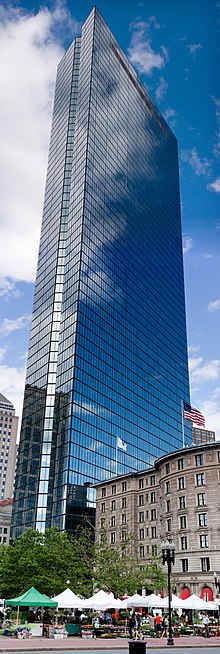

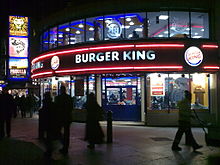


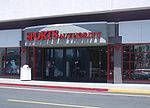











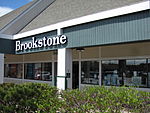

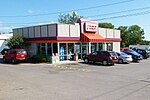
2 comments:
Hmm it seems like your site ate my first comment (it was super long) so I guess I'll just sum it up what I had written and say, I'm
thoroughly enjoying your blog. I as well am an aspiring blog blogger but I'm still new to everything. Do you have any recommendations for first-time blog writers? I'd
definitely appreciate it.
Also visit my web site :: Psn Code Generator **
What's Happening i'm new to this, I stumbled upon this I've discovered It positively helpful and it has helped me out loads. I'm hoping to contribute & help different users like its helped me.
Good job.
Here is my web site - Psn Code Generator
Post a Comment